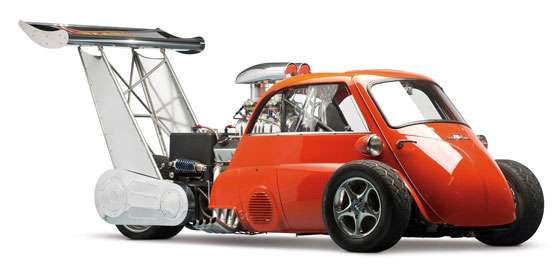
Os discos de freio são de duplo circuito com barra de balanço AP, e a suspensão foi herdada de um BMW M3. As rodas dianteiras possuem pneus BF Goodrich G-Force, e a única roda traseira possui pneu Sumitomo HTRZ II.
Embora o veículo seja totalmente funcional, o veículo é restrito à exibição em eventos e não deve ser usado em pistas ou provas de arrancada, em razão do excessivo torque produzido pelo motor a apenas uma roda, o que pode ser um perigo se guiado de forma errônea. Espera-se que o 1959 BMW Isetta Whatta Drag receba um lance vencedor entre 75 mil e 100 mil dólares.
A one-of-a-kind, fully functioning, 730 horsepower creation of Hot Wheels’ famed model.
1959 BMW Isetta “Whatta Drag”
SPECIFICATIONS
Manufacturers: (Body) Bayerische Motoren Werke
Origin: Munich, Germany
Production: 1
Motor: Supercharged Chevrolet V-8
Displacement: 502 cu. in.
Power: est. 730 hp
Length: 12 ft. 4 in.
Identification No. N/A
The Hot Wheels brand of die-cast toy cars was first introduced by American toy manufacturer Mattel in 1968. Over the ensuing years, Hot Wheels licensed the rights to produce a number of faithful replicas of real cars, and they also created a number of fantasy pieces. One of these models was called Whatta Drag. Designed by Phil Riehlman and first introduced in 1998, Whatta Drag is perhaps the most recognizable of them all. The concept was based on a heavily-modified BMW Isetta bubble car that retains its identity as an Isetta while taking on that of a V-8 powered dragster. So successful was the design that it was included as part of seven different Hot Wheels series that would be produced over the next decade.
So iconic was the fantasy piece that in 2005, microcar collector Bruce Weiner decided to turn it into reality by commissioning a life-sized, fully-functioning version. Given the choice of creating his own amalgamation or replicating one of the seven different versions, Weiner chose Model Number 213, which was introduced in 2000. Number 213 is the most detailed of all the Whatta Drag models, finished in bright orange with a large Hot Wheels decal on top of the spoiler and utilizing chromed five-spoke wheels.
Using the toy model as a blueprint, the basis of the project utilized the body shell from an original 1959 BMW Isetta. A new, sturdy frame was constructed using heavy welded steel tubing. Power is provided by a 502-cubic inch Chevrolet “big block” crate engine, which guzzles 93 octane fuel and is equipped with a BDS supercharger, twin Holley 750 CFM double pumper carburetors, and Zoomies exhaust headers rigged to shoot flames four feet out of the pipes!
Power is transmitted via a two-speed manual transmission, and the dual circuit disc brake system also incorporates an AP balance bar for burnouts and donuts. In keeping with its BMW roots, the suspension is from an M3; the chromed five-spoke front tires use the BMW roundel logo and are shod with B.F. Goodrich G-Force tires. The single rear wheel is a custom 18 inch by13 inch drag racing wheel with a Sumitomo HTRZ II tire.
Mr. Weiner wanted the life-sized Whatta Drag to emulate the toy as much as possible, so many small details found on the model, like the polished belt covers and tubular lattice for the spoiler, are exactly replicated. Even the steering column was designed in such a way to pay homage to its Isetta parentage while also taking safety and ease of entry into account, including the incorporation of a quick-release racing steering wheel hub.
Although Whatta Drag was created to be faithful to the model as well as fully functional, it is important to emphasize that this car is strictly for show and not to be used for road or track; the massive amount of torque produced by the Chevrolet 502 motor can be dangerous if driven improperly. As a showpiece, it is totally unique, one of only four Hot Wheels models to have been built into a real car, and it is a must-have example for any all-inclusive microcar collection.

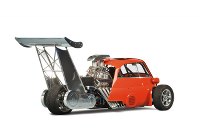
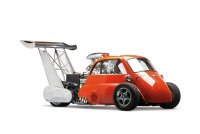

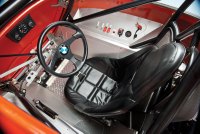
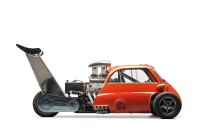
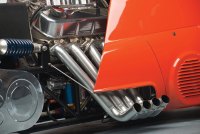
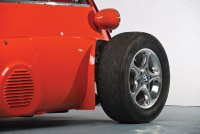
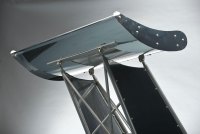
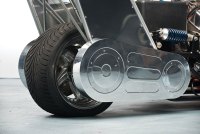
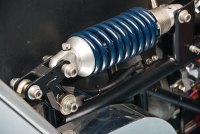
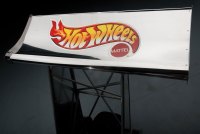
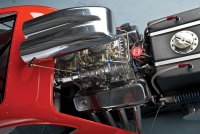
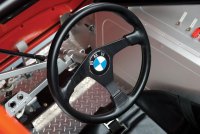
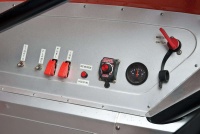
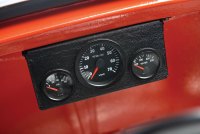
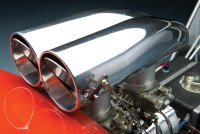
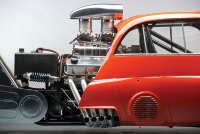
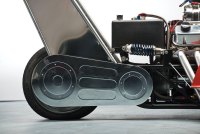
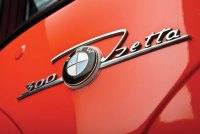
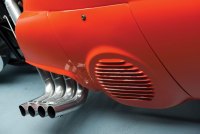
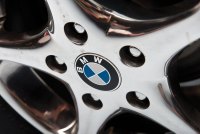
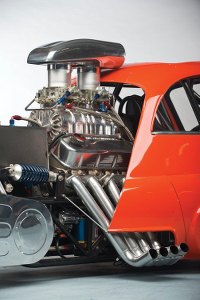
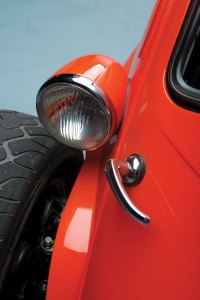
Postar um comentário